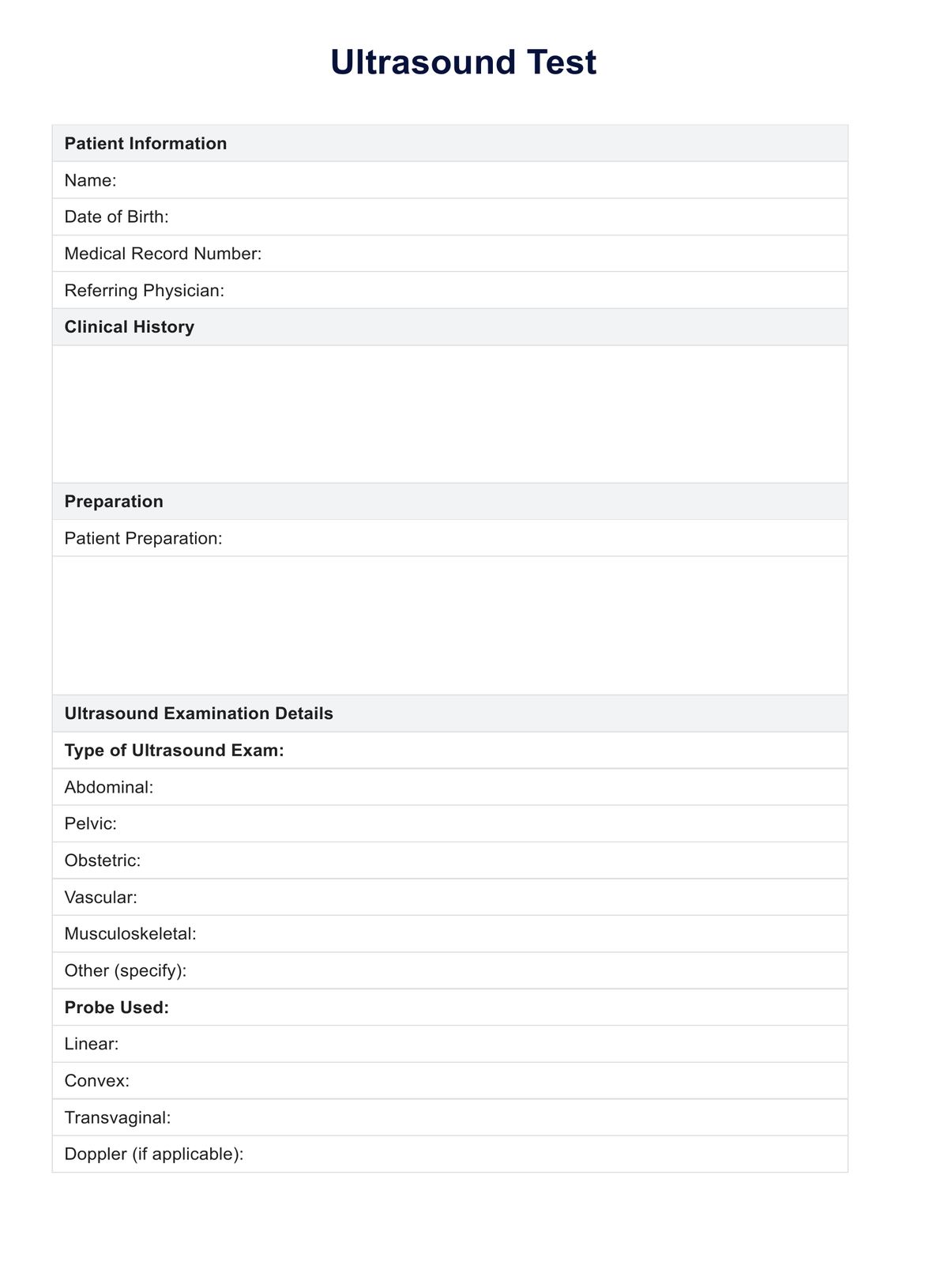Ultrasound is effective in detecting a range of conditions, including but not limited to gallstones, kidney stones, liver diseases, pregnancy-related complications, heart conditions, and abnormalities in organs such as the thyroid and pancreas.

Are you looking for examples of ultrasound tests? Download Carepatron's free PDF with sample ultrasound test questions to help you prepare for your upcoming exam.
Ultrasound is effective in detecting a range of conditions, including but not limited to gallstones, kidney stones, liver diseases, pregnancy-related complications, heart conditions, and abnormalities in organs such as the thyroid and pancreas.
2D ultrasound provides two-dimensional black-and-white images commonly used for routine imaging and fetal monitoring. On the other hand, 3D ultrasound offers three-dimensional images, enhancing visualization of the fetus or organs for more detailed assessments. Lastly, 4D ultrasound adds the dimension of time, providing real-time moving images, often used in obstetrics to capture dynamic fetal movements.
To prepare for an ultrasound, patients should follow instructions, wear comfortable clothing, inform the technician of relevant medical information, remove jewelry or metallic objects in the examination area, and arrive on time for their appointment.
EHR and practice management software
*No credit card required
Free
$0/usd
Unlimited clients
Telehealth
1GB of storage
Client portal text
Automated billing and online payments